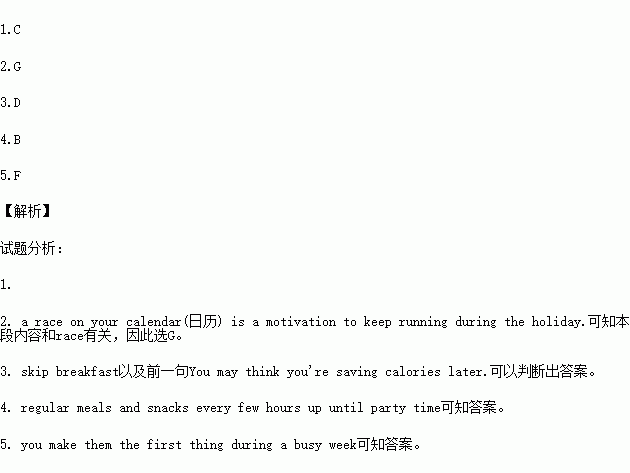题目内容
阅读理解。
As you're busy with your studies, the weeks during the Spring Festival can be a time when training and healthy eating plans go out of the window. But you can continue running and avoid weight gain during the holiday season. 1..
Pick a race
Having a race on your calendar (日历) is a motivation to keep running during the holiday. _2._. Check our active.com or Running in the City for events near you.
Don't skip breakfast
If you're going to a holiday party in the evening, don't make the mistake of skipping breakfast. You may think you're saving calories for later. 3..
Bring your own healthy dishes
Chances are that most of the dishes at holiday gatherings are going to be high in taste and calories. Bring your own healthy appetizers to the party. The host will appreciate it, and you know there will be at least one wise choice on the buffet table.
4.If you're heading to an evening event, eat regular meals and snacks every few hours up until party time. You won't arrive at the party ready to attack appetizers. Make sure you include fiber at each meal because it keeps you full longer.
Plan your runs
It's easy to say that you'll keep running regularly during the holiday season, but sticking to it requires a strategy. Schedule your runs like appointments, so you make them the first thing during a busy week. 5..
A.Treat yourself
B.Eat small meals
C.Try some or all of these strategies (策略)
D.In fact, it may lead to overeating later in the day
E.Buy yourself a gift of some new running shoes and clothes
F.If you have runs scheduled, you are more likely to get them done
G.Once you choose one that is in a few weeks, set a plan and stick to it
 100分闯关期末冲刺系列答案
100分闯关期末冲刺系列答案 名校联盟快乐课堂系列答案
名校联盟快乐课堂系列答案
